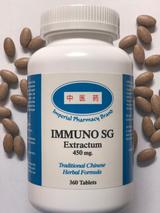Introducción a la hipertermia:
La hipertermia es un procedimiento de salud mediante el cual la temperatura corporal sistémica se eleva artificialmente con la aplicación de calor en todo el cuerpo, o temperatura alta se induce localmente y de manera profunda mediante la aplicación de calor focalizado.
La hipertermia sistémica tiene como objetivo mejorar la respuesta inmune del cuerpo contra las células cancerosas. La hipertermia induce el sistema inmunitario a volverse más activo y mucho más agresivo, convirtiéndolo en un arma decisiva para combatir el cáncer. Además, las células cancerosas no pueden hacer frente a las altas temperaturas como lo hacen las células normales, lo que las hacen más susceptibles a las terapias contra el cáncer y un objetivo más fácil para que nuestro sistema inmunitario las ataquen y las destruyan. La hipertermia localizada consiste en aplicar calor profundo a un área especifica del cuerpo para inducir la destrucción de lesiones cancerosas. En un protocolo de tratamiento de rutina, la temperatura puede elevarse hasta 42 °C (108 °F) y mantenerse durante 60 a 90 minutos. Una vez que finaliza el procedimiento, el paciente es transferido a una sala de monitoreo para observación antes de abandonar la instalación de tratamiento.
La hipertermia representa un logro monumental en el tratamiento del cáncer; es una terapia efectiva y segura, con muy bajo riesgo de posibles efectos secundarios. Sin embargo, la hipertermia todavía se considera principalmente una forma de terapia integrativa complementaria. Si bien la hipertermia se puede usar sola, se recomienda en combinación con tratamientos convencionales (quimioterapia y / o radiación), o junto a medicamentos herbarios antineoplásicos con cierta evidencia comprobada (i.e. artemisinin, triptolide, etc.).
La hipertermia recibida bajo supervisión profesional causa pocos o ningún efecto secundario. Los efectos secundarios raros pero potenciales pueden incluir pequeñas ampollas o quemaduras superficiales, taquicardia, dificultad para respirar y ansiedad. Se desconoce que la hipertermia causa nauseas, vómitos, perdida de cabello o cualquier otro efecto adverso grave. La hipertermia es una terapia estándar contra el cáncer en China, Japón, Corea del Sur, Alemania y otros países. En Estados Unidos, la hipertermia está disponible como una forma de terapia complementaria y alternativa; está además aprobado por la FDA para su uso en combinación con radioterapia para tratar el cáncer de cuello uterino y en combinación con quimioterapia, para el lavado peritoneal para tratar el cáncer en la cavidad peritoneal.
La aplicación de hipertermia en oncología es efectiva y tiene beneficios para la salud de pacientes con tumores sólidos, así como para pacientes con leucemia. Consulte la siguiente lista de tumores sólidos para los que la hipertermia es adecuada y recomendable:
Tumores sólidos superficiales:
Melanomas, epiteliomas cutáneos, metástasis, nódulos linfáticos, y canceres superficiales recurrentes.
Tumores sólidos profundos:
Sarcomas, pulmón, pleura, páncreas, pelvis, hígado, hueso, colon, cuello uterino, riñón, estomago, vejiga, cerebro, lengua y faringe, cabeza y cuello, laringe, próstata, ovario, mandíbula y órganos sexuales masculino y femenino.
¿Soy candidato para recibir hipertermia?
Cada caso es único; Nuestro equipo de médicos revisara su información médica y le informara si la hipertermia es beneficiosa en su caso. Para obtener información sobre esta y otras terapias en nuestra clínica, no dude en contactarnos: Contacto
Referencia:
Van der Zee J. Heating the patient: a promising approach? Annals of Oncology 2002; 13(8):1173–1184.Â
Wust P, Hildebrandt B, Sreenivasa G, et al. Hyperthermia in combined treatment of cancer. The Lancet Oncology 2002; 3(8):487–497.Â
Hildebrandt B, Wust P, Ahlers O, et al. The cellular and molecular basis of hyperthermia. Critical Reviews in Oncology/Hematology 2002; 43(1):33–56.Â
Falk MH, Issels RD. Hyperthermia in oncology. International Journal of Hyperthermia 2001; 17(1):1–18.Â
Dewhirst MW, Gibbs FA Jr, Roemer RB, Samulski TV. Hyperthermia. In: Gunderson LL, Tepper JE, editors. Clinical Radiation Oncology. 1st ed. New York, NY: Churchill Livingstone, 2000.
Kapp DS, Hahn GM, Carlson RW. Principles of Hyperthermia. In: Bast RC Jr., Kufe DW, Pollock RE, et al., editors. Cancer Medicine e.5. 5th ed. Hamilton, Ontario: B.C. Decker Inc., 2000.
Chang E, Alexander HR, Libutti SK, et al. Laparoscopic continuous hyperthermic peritoneal perfusion. Journal of the American College of Surgeons 2001; 193(2):225–229.
Hu Yongchen, Wang Jifang, Lu Shibi, Laboratory research of activity change of NK cells and effect of lung metastasis after locan hyperthermia. National Medical Journal of China, 1996, 76: 582.
Kubista B, Trieb K, Blahovee H, et al. Hyperthermia increases the susceptibility of chontro- and osteosarcoma cells to natural killer cell-mediated lysis. Anticancer Res, 2002, 22(2A): 789-792.
Morita M, KuwanoII, Araki K, et al. Prognostic significance of lymphocyte infiltration following preoperative chemoradiotherapy and hyperthermia for esophageal cancer. Int J Radiat Oncol Biol Phys, 2001, 49(5): 1259-1266.
Todryk S, Melcher A, Hardwick N, et al. Heat shock protein 70 induced during tumor cell killing induces Th1 cytokines and targets immature dendritic cell precursors to enhance antigen aptake . Immunol, 1999, 163 (3): 1939-1408.
Melcher A, Todryk A, Hardwick N, et al. Tumor immunogenicity is determined by the mechanism of cell death via induction of heat shock protein expression. Nat Med, 1988, 4(5): 581-587.
Schueller G, Stift A, Fredl J, et al. Hyperthermia improves cellular immune response to human hepatocellular carcinoma subsequent to co-culture with tumor lysate pulsed dendritic cells. Int J Oncol, 2003, 22(6): 1397-1402.
Li Jie, Guo Qiujun, Lin Hongsheng. Regulating effect and molecular mechanism of Traditional Chinese Medicine in the tumor immune suppressive environment. World Chinese Medicine J, 2014, 9(7): 845-856. Contacto







